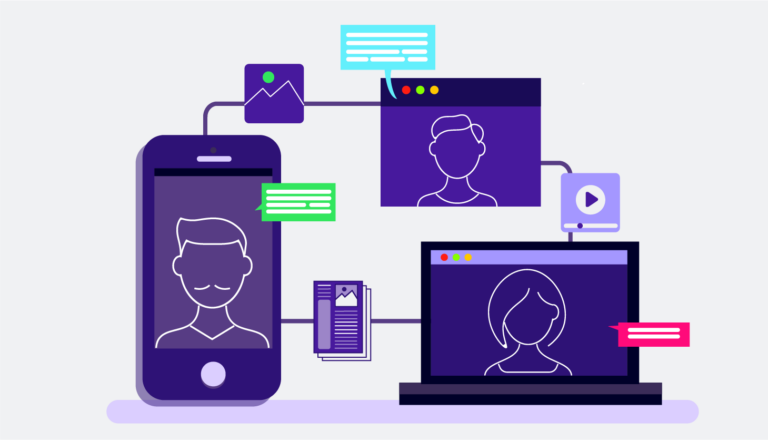The struggle to manage content is becoming increasingly prevalent in the life sciences industry.
In fact, 75% of executives in the life sciences recall that they produce large amounts of content, but only 13% believe that they’re able to handle it in an efficient and beneficial way.
But what are the main challenges?
-
Here are a few:
-
Working in silos which inhibits marketing efficiency
-
Struggling with reusing content to maintain brand consistency
-
Maintaining global and regulatory compliance, like sticking to process and version control and
-
Keeping up with the demands of the consumer wanting more and more content globally – and even more personalized than ever
-
There’s no shortage of marketing tools available that companies can use in order to manage their content and scale alongside the massive amounts of assets they produce globally.
Digital asset management is a tool that increases control over the digital assets on a global scale, in addition to facilitating better storage, management and distribution of these assets on to various channels. Simultaneously.
Marketing efforts continue to grow for the life sciences industry, with 9 out of 10 pharma companies investing more in marketing and sales than development and research.
In fact, big pharma companies increased their spending by $10 billion on marketing between 1997 and 2016, leading to an increase in drug sales from from $116.4 billion to $329 billion.
Another area that has seen explosive growth is the adoption of digital tools.
Healthcare professionals (HCPs) are increasingly looking for digital self-service options when ordering products. Prior to COVID, few considered procurement portals (2%) or supplier apps (13%) as valid purchase channels. Today, those numbers have exploded to 39% and 45%.
That’s where a DAM platform can support you.
In this article we’re looking at 4 challenges within life sciences marketing and how DAM software helps solve them head on.
-
Table of contents
How DAM solves 4 of life sciences’ marketing challenges
Challenge 1:
Siloed approach inhibits marketing efficiency
One of the main marketing struggles facing the life sciences industry is dealing with assets located in more than one place – leading to an unaligned way of working.
And working in silos = significantly lower productivity, lower morale and less strategic use of resources.
With a siloed approach, marketers in the life sciences often struggle with managing all the assets that belong to different campaigns stretching across different brands and regions.
The result?
Wasted time and money from having to recreate and re-approve content after losing assets, or not even being able to use the assets they have to begin with.
So how do you ensure that all employees within your pharmaceutical company are on the same page – when it comes to which assets are used for which campaigns, and which product photos are both approved and on brand?
DAM’s solution:
“One central source of truth”
A DAM system provides one centralized place with the same access for all assets belonging to, for example, pharmaceutical products (like photos, information documents, PDFs, videos, etc).
One centralized storage platform can help pharmaceutical companies across different locations avoid hang-ups and congestion in the internal processes – improving process control as everyone has the same access to the same exact asset, knowing specifically which one is supposed to be used for each pharmaceutical product, and in which region.
Adding on, what DAM efficiently enables is a much easier search for assets right when you need them. The centralized asset library will facilitate both external and internal teams finding the correct, approved asset when it’s time to deliver.
This means that you’re essentially breaking down the silos that limit you from reaching that more cohesive and coordinated stream of productivity, as only the right people have access to the right assets.
For example, sales teams no longer need to go via marketing to get the collateral they need to speak with potential customers.
Challenge 2:
Lack of asset reuse
Another challenge facing life sciences marketers is about not making the most of the content they produce.
When 70% of content ends up being unused, there’s a lot of untapped potential many life sciences marketers are missing out on when it comes to acquiring new customers through increased personalized messages in new channels.
Especially for global businesses like life sciences companies that need global consistency, and therefore, they should make the most of the assets they already have, across geographies.
DAM’s solution:
Easier reuse & repurpose of assets
A digital asset management tool can help life sciences firms with cross-utilizing content via online product pages, pack shots, logos, inserts and e-details.
It’s never been easier to repurpose content with a DAM. The tool is particularly effective if one needs to render and transform content into new formats.
Furthermore, a DAM will help automate the processes of re-using assets across different brands and campaigns through already approved and standardized modules – boosting brand consistency, and facilitating an improved buyer experience.
A DAM can also help life sciences firms rise above disjointed content supply chain processes in the digital space by making more out of their assets. It can help them advance every single step of every asset productivity – from being approved to being shared, and in the end, distributed to every relevant channel.
Challenge 3:
Increased risk for off-label marketing
The life sciences industry is by far one of the most complex and incredibly regulated industries. In other words, it’s crucial to avoid legal liability, reputational loss and off-label marketing.
Not to mention avoiding using pharmaceutical labels that are outdated or changed – version control is crucial in order to prevent fines.
The costs of settlement fees for off-label marketing can be expensive and between 2009 and 2014, over $13 billion was collected by the Department of Justice in the US.
One of the industry’s main challenges lies in navigating the different compliance guidelines and the strict codes when it comes to content. This goes for almost all life sciences companies, whether you’re a medical device manufacturer or a pharmaceutical provider.
In order to consistently preserve and strengthen brand credibility, it’s imperative that the life sciences always stick to the right version of an asset that is in line with rules and regulations, in order to stay in check and to get the right marketing message across – every time.
But the question is – how?
DAM’s solution:
Helps stay in line with regulatory compliance
A digital asset management tool will allow for complete control – both when it comes to the quality and approval of the content itself, and the entire content supply chain.
This helps life sciences companies more accurately accomplish their marketing campaign goals involving content, and lets them hit the target audience and all the right channels without any delays.
After all, the life sciences industry already deals with complex and lengthy product launches due to local regulations and industry codes.
A DAM helps out by amplifying the general management and usage of assets (through same & shared access and categorization) – and at the same time avoid off-label production in four ways:
-
The four different ways
-
Make it easier to reuse and repurpose assets
-
Ensure legal protection and legal compliance through clear approvals and audit trails
-
Facilitate version control with one central repository of assets owned by the company for all employees + fewer silos
-
Help streamline content processes
-
Furthermore, DAM helps with automated approved-for-use workflows that will only give access to the right documents, so there’s no slip-ups in terms of wrongful product info when releasing new drugs onto the market.
Challenge 4:
Geographical tailoring of content to fit different campaigns
Lastly, a challenge facing many life sciences firms is being able to quickly adapt their content to comply locally, regionally and globally.
A large proportion of the marketing efforts in the life sciences is creating websites, details aids, patient education materials and brochures. But within this content creation process, marketers need to stay in line with the frameworks regarding regulatory compliance across regions and locations.
How can the industry make sure their marketers not only have access to the right content, but also that the content is tailored to fit different regions with all the rules and regulations?
DAM’s solution:
Simplifying the process of adapting content
Digital asset management software helps companies manage content and assets in one centralized platform. In addition to that, it also automates the processes that deliver that pharmaceutical content to the relevant channels.
Specifically for pharmaceutical companies DAM serves as a valuable resource.
By ensuring the accuracy of content, label compliance and boosting the efficiency of content ops – relevant campaigns are delivered efficiently and adhere to local standards.
This is all through the simplification of the time-intensive (and in most cases redundant) processes of managing and distributing content to fit these local and regional centers.
Furthermore, Digizuite DAM includes insights that allow you to see where assets are being downloaded and streamed across different locations, so it’s easier to see which assets perform the best. These content analytics will then help you tailor your campaigns and spend more time and resources on assets that actually matter.
Case study: Lonza
Lonza is a large provider of integrated healthcare solutions and has an immense global image and footprint, due to their operations ranging across six different continents and four business affiliations.
Lonza needed to unite their global workforce. The solution was DAM and by investing in Digizuite, Lonza Group was able to achieve two things:
> Organize highly collaborative processes and
> Acquire the level of efficiency needed to get ahead
How?
A “central source of truth” for all things content and brand. The Lonza Group used DAM in order to organize all assets owned by the company in one place, which helped avoid misunderstandings and time lost trying to figure out what assets are approved when creating those global campaigns.
Furthermore, Lonza Group used Digizuite’s Sitecore integration. DAM served as a valuable tool that helped them integrate their CMS system for more optimal usage and management of all things content.
It wasn’t just the marketing department that benefited from a DAM.
It’s much easier for the sales team in Lonza Group to pull out the assets that they need when they need them for their global salesforce. This means a significant boost in efficiency for the sales teams located all over the world as they’re all equipped with the up-to-date marketing collateral.
Lastly, Lonza Group was able to leverage DAM to support their creative processes. And greater creativity equals greater initiative to take every marketing project more confidently on.
Conclusion
The life sciences industry focuses on marketing trends in order to reach their target market and grow.
However, with trends come many challenges, such as organizational silos, unused content, increased risk of off-label marketing and struggling to tailor content to all regions of the world.
-
A DAM software can help out by:
-
Providing a “central source of truth” and thus breaking silos
-
Helping reuse and repurpose content across channels
-
Helps avoid off-label marketing through more regulatory compliance
-
Facilitating an easier way to tailor content to different regions and local hubs
-
Interested in learning more about DAM and its capabilities for life science marketing?
-
Resources you’ll love











